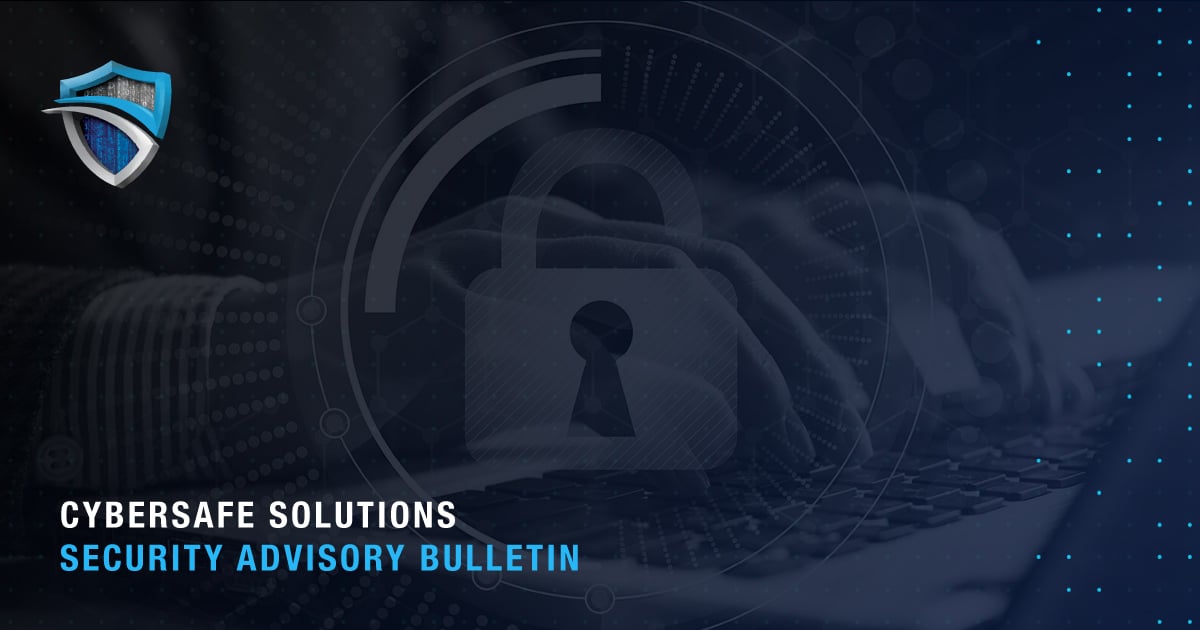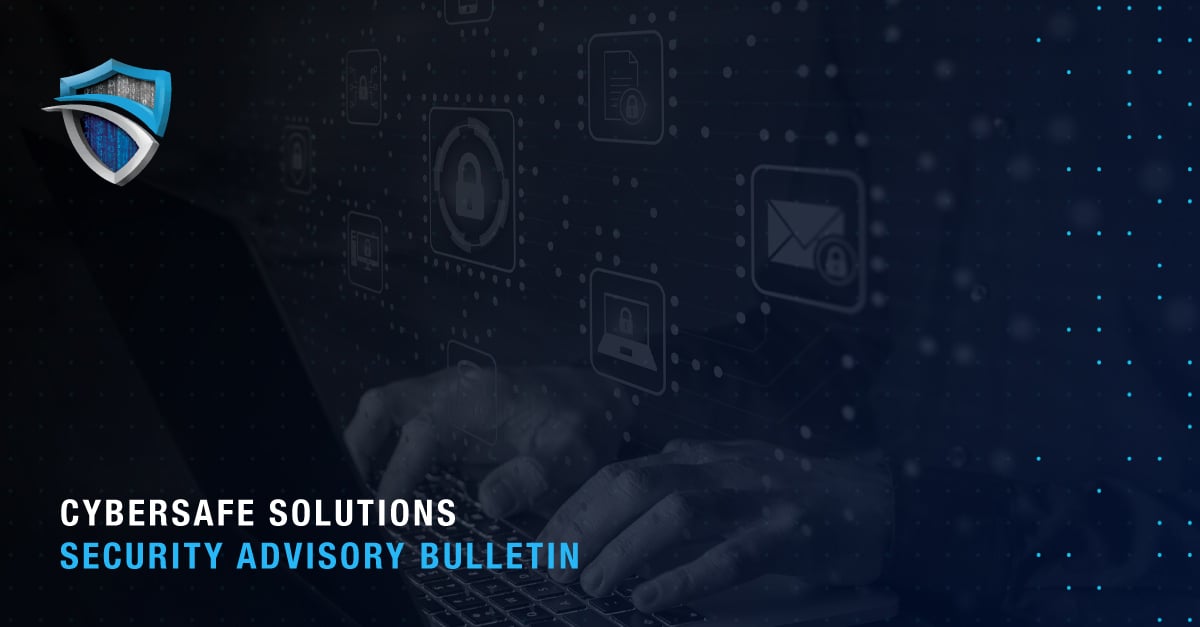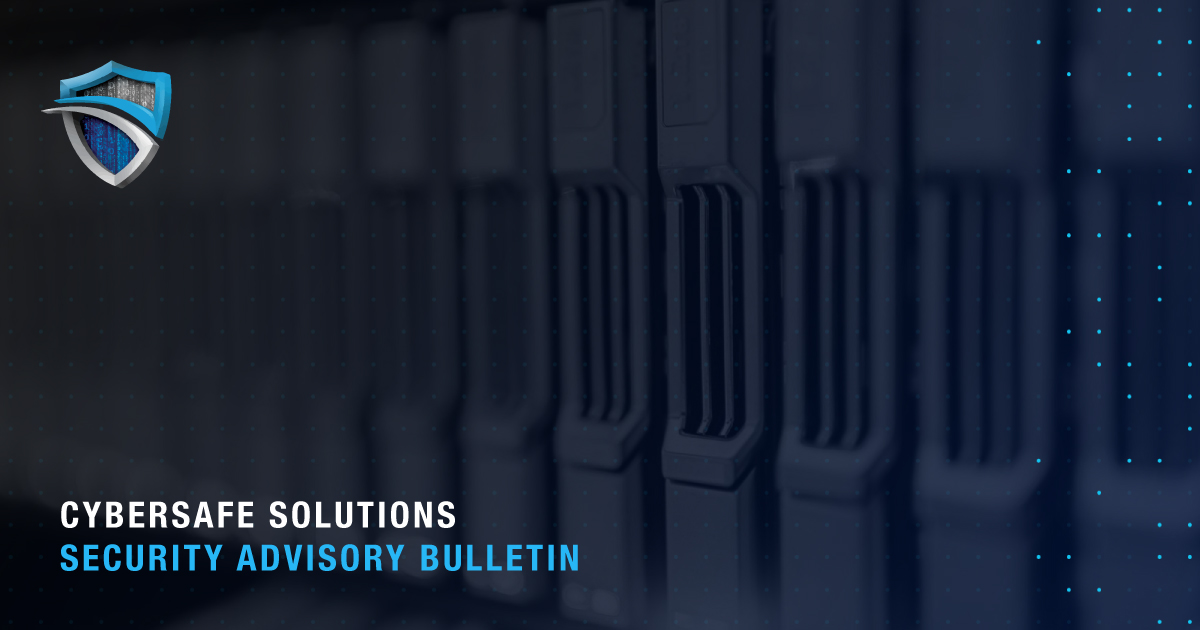KEY TAKEAWAYS
- Regulatory Complexity & Compliance. Increasing complexity in cybersecurity regulations across jurisdictions necessitates thorough understanding and compliance strategies for CISOs. Use legal updates, engage with regulatory bodies, and conduct cyber risk assessments to navigate the regulatory landscape and prioritize security measures effectively.
- Achieve Compliance Through a Comprehensive Cybersecurity Program. Compliance should be part of a broader cybersecurity framework. Limiting cybersecurity measures to compliance requirements is a backward-looking strategy that, although meets regulatory standards, might overlook vulnerabilities in your defense.
- Partner with a Cybersecurity Expert. Partner with a cybersecurity expert such as Cybersafe Solutions for comprehensive support, from assessment to incident response, to enhance defense and ensure compliance.
For many CISOs, keeping up with the cyber threat landscape and related compliance requirements can be demanding. This is especially important given the large-scale adoption of cloud computing, hybrid work models, and data-heavy applications such as AI and IoT一all which significantly expand an organization’s attack surface.
As such, here are a few tips to help navigate these complexities and achieve compliance in today’s dynamic regulatory landscape.
Stay Informed About the Regulatory Landscape
Many organizations face a patchwork of cybersecurity laws and regulations across overlapping jurisdictions, turning compliance into a challenge of shapeshifting dimensions.
For example, a financial services company operating in the United States and Europe must comply with the U.S. Gramm-Leach-Bliley Act (GLBA) to protect the privacy of American consumers' financial information and the General Data Protection Regulation (GDPR) for its European customers' data protection. Additionally, if the company has customers in California, it must also comply with the California Consumer Privacy Act (CCPA), which provides further data privacy rights to residents of the Golden State.
Thankfully, several resources are available to help keep up with requirements. International law firm Gibson Dunn's comprehensive annual update is an excellent starting point for a broad overview of the U.S. cybersecurity and data privacy regulatory landscape.
These resources can also be helpful:
Government & Regulatory Body Updates
Ensure regular contact with government agencies and regulatory bodies, such as the U.S. Federal Trade Commission (FTC), the European Data Protection Board (EDPB), or industry-specific regulatory agencies. Subscribe to newsletters, alerts, and bulletins.
Conferences & Seminars
Attend relevant cybersecurity and legal conferences and seminars for the latest developments in laws and regulations.
Industry Forums & Groups
Join industry-specific associations and forums where CISOs and other cyber professionals share information, updates, and best practices. Here are a few to consider:
- Information Systems Security Association (ISSA)
- National Cybersecurity Alliance (NCSA)
- National Council of ISACs
- National Cybersecurity Society
Cybersecurity News & Research Platforms
Follow reputable cybersecurity and technology news and research platforms, such as Gartner.com, SecurityWeek, or Cyber Defense Magazine, for updates on legislative changes and discussions of compliance best practices, solutions, and insights.
Work With a Forward-Thinking Cybersecurity Partner
We spend more time on this below but suffice it to say having an expert service provider on your side helps ensure you have a resource for the latest developments in the cybersecurity compliance space. At Cybersafe, our team includes industry experts who inform our solution set with insights on the current attack landscape and what’s potentially on the horizon.
Focus on Cybersecurity First
The best way to address compliance is within a broader cybersecurity framework. Constraining your cybersecurity footing to checkbox requirements is a reactive approach that, while compliant, can leave gaps in your defenses.
Every organization’s unique combination of data, systems, employees, and third-party partners contributes to its overall attack surface. Ideally, a comprehensive cybersecurity program that addresses specific organizational needs and exposures can also fulfill its compliance requirements.
This holistic approach is more proactive, incorporating stricter standards where regulations overlap and adaptive as requirements evolve. Staying ahead of the threat landscape is always preferable, as catching up after the fact can be costly, if not lethal, for many organizations.
Undergo a Cyber Risk Assessment
A cyber risk assessment can offer valuable insights. It’s a critical diagnostic tool that maps out potential vulnerabilities and threats to your digital assets while factoring in relevant compliance considerations. An outside perspective can identify weaknesses internal teams might overlook. It can highlight areas requiring immediate attention and help prioritize security investment, ensuring resources are optimized to bolster defenses while meeting compliance requirements.
Our risk assessment process includes manual and automated methods, including detailed questionnaires, to identify vulnerabilities and prioritize security measures based on risk potential. Related reporting provides an executive summary, findings, recommendations, and technical details to guide management and IT staff in mitigating risks and enhancing your organization's cybersecurity defense.
Address Third-Party Exposure
Suppliers, service providers, and other value chain partners can introduce additional opportunities for data breaches, operational interruptions, and serious compliance issues. In fact, some of the more destructive attacks in recent days have been deployed via a third party, such as the SolarWinds hack. As such, regulatory authorities increasingly focus on managing third-party risk as a key component of cybersecurity compliance.
For example, the U.S. Securities and Exchange Commission’s (SEC) recently released Cybersecurity Rules require public companies to disclose material impacts from incidents associated with third-party partners. Other laws requiring third-party review include the Health Insurance Portability and Accountability Act (HIPAA), the New York State Department of Financial Services Cybersecurity Regulation NYCRR 500 (23 NYCRR 500), and Gramm-Leach-Bliley Act (GLBA), among many more.
Successful partnerships with third parties require open communication and comprehensive due diligence before any agreement is struck. Best practices include evaluating vendors' access needs and verifying their security measures meet your organization's criteria to reduce threat risk. This involves scrutinizing how data is managed, who can access it, how it's encrypted, and how incidents are addressed.
Include Data Protection Measures
A robust data protection policy can equip an organization with comprehensive security measures, foresight, and adaptability to help maintain compliance, even in an evolving regulatory landscape. Regardless of how your organization measures compliance, comprehensive data security should be part of your broader cybersecurity program.
In the aforementioned Gibson Dunn report, the FTC’s Deputy Chief Technology Officer Alex Gaynor highlighted three best practices for better protecting user data:
- Require multi-factor authentication (for consumers and employees).
- Use encryption and authentication protocols for system connections.
- Implement and follow data retention schedules.
While this is not the FTC’s complete list of data security recommendations, they can, if implemented properly, make a significant impact in safeguarding data assets.
Cybersafe recommends data protection strategies that align with the FTC’s guidance. They include robust encryption, strict access management, and importantly, ongoing surveillance to defend against unauthorized entry and cyber risk. Regular audits and updates to these policies help guarantee that all data handling practices align with the latest data privacy and security standards, providing comprehensive protection for sensitive information and maintaining trust with clients and other stakeholders.
Exercise Caution With AI
The FTC has raised concerns about the impact of algorithms on consumer privacy, highlighting issues such as the use of consumer data in training large language models (LLMs) and the risk of personally identifiable information (PII) being inadvertently disclosed through chatbots.
This is particularly pertinent to businesses using these technologies within their own products and services. The FTC has warned against using automated tools that could lead to biased or discriminatory outcomes, emphasizing that blaming third-party developers is not a viable excuse for failures. Instead, businesses should conduct thorough investigations to identify AI's potential risks and impacts before deploying it in settings that directly engage consumers.
Other AI use cases that could invite FTC enforcement include deepfake technology, voice cloning, targeted advertising that may lead consumers to harmful choices, and tools claiming to detect generative AI content.
In short, thoroughly assess the risks and impacts of AI technologies before deploying them in consumer settings.
Prepare for Incident Response
When a cyber incident unfolds, identifying the limits of its reach as soon as possible is crucial to managing the situation effectively. Understanding the full impact and scope of the breach allows for targeted containment and recovery efforts, mitigating potential harm and disruption.
Cybersafe adopts a robust incident response approach, swiftly identifying and mitigating cybersecurity breaches to minimize damage. This involves immediate threat containment, thorough investigation to understand the breach's scope, and effective recovery measures to restore normal operations.
We also encourage learning from incidents to bolster defenses against future threats and continuously updating response protocols based on new insights. This comprehensive approach ensures current incidents are properly addressed and strengthens organizational resilience against potential future attacks.
Work with a Cybersecurity Expert
Partnering with an industry leader such as Cybersafe can be a game-changer for organizations striving to achieve and maintain compliance.
We work with a range of organizations, from small and mid-sized businesses to large enterprises, offering solutions in assessment, prevention, monitoring, intrusion detection, and incident response. Our services are designed to navigate the ever-changing realm of cyber threats and regulatory requirements.
We take a comprehensive approach that helps ensure your organization can confidently tackle not only the complexities of compliance but the ongoing challenges of upholding a robust cybersecurity posture as well.
Cybersafe is a leading MSSP providing unmatched continuous monitoring, risk assessment, incident response, and more. For more about how to bolster your cybersecurity posture with our services, schedule a consultation or contact us today.





